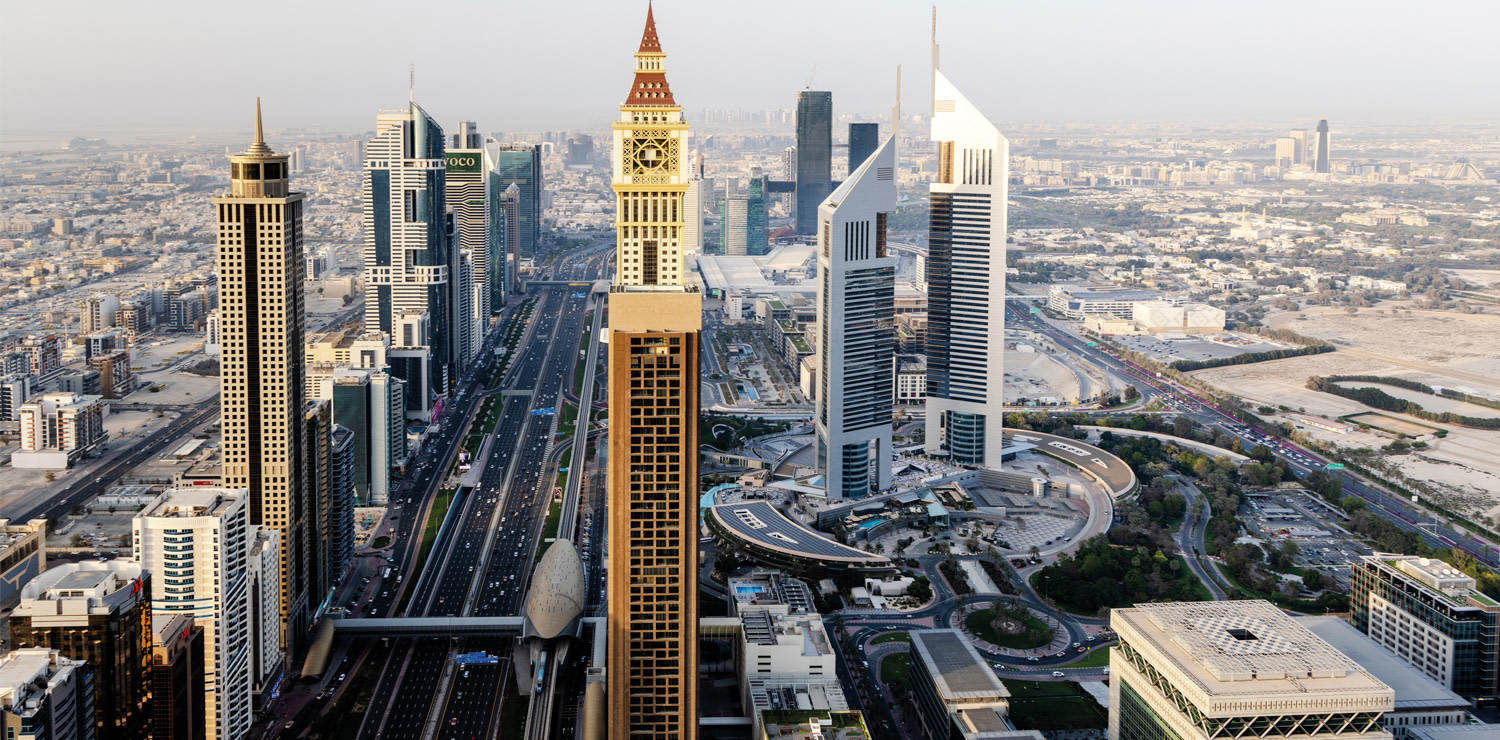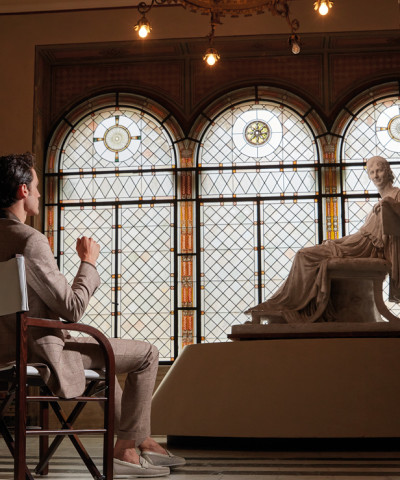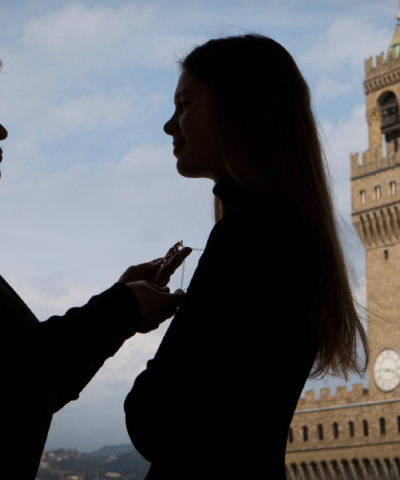Financial District Dubai: what to do and where to eat
A guide to Dubai's DIFC area: from buildings and key sights to art galleries and restaurants
There are few places where one can feel the clear and electrifying sensation of being exactly in the center of the world. Along New York’s Fifth Avenue, in the embrace of the colonnade of St. Peter’s in Rome, in the chaotic bustle of Piccadilly Circus, in the center of People’s Square in Shanghai, and DIFC, the beating heart of Dubai.
 The International Financial District
The International Financial District Gate Building and Emirates Tower in the background, Gevora Hotel
Gate Building and Emirates Tower in the background, Gevora Hotel The International Financial District, more commonly called by its acronym DIFC, was founded in 2004 and, in step with the dizzying pace of growth of the city, it rapidly grew to become the main financial hub and commercial crossroads of the Middle East, Africa, and Southeast Asia. By widening the lens on the geographical map, DIFC appears strategically positioned between the Financial Center of London to the west and that of Singapore to the east bridging the gap between the main financial centers of London, New York, Hong Kong, and Tokyo.
 Entrance of the Gate Building and the Gate Avenue
Entrance of the Gate Building and the Gate AvenueSet among the main symbols of the city, the Burj Khalifa and the more recent Museum of the Future, pearly skyscrapers in the sunlight, and red at sunset are standing tall in the heart of the Emirate capital. The very first glance at the gates of DIFC is the Gate Building, the 80-meter colossus clad in Italian granite panels with a similar design to the Grande Arche de la Défense of Paris, of which it represents a contemporary interpretation. Its arched shape allows us to plunge our gaze into the courtyards, cafes, and terraces in the distance.
 Burj Khalifa from The Highest View at Gevora Hotel
Burj Khalifa from The Highest View at Gevora Hotel  Burj Khalifa from The Highest View at Gevora Hotel
Burj Khalifa from The Highest View at Gevora Hotel From every corner of DIFC, it is impossible not to glimpse the golden tip of the Gevora Hotel, one of the tallest hotels in the world: in just 38 seconds this fascinating building takes its visitors to the 71st floor, from whose panoramic gallery one can enjoy a blinding view of the city and its desert. Iconic and futuristic in design are also the two twin skyscrapers of Damac Park, reminiscent of the well-known Gherkin tower of London.
 The International Financial District
The International Financial DistrictIn the avant-garde district, the feverish business activity is certainly striking, even just walking through its streets, but crossing the Emirate’s financial district it turns out that it is not only the business that attracts entrepreneurs and adventurers from all over the world but also art. In DIFC, there is art everywhere.
 the Gate Avenue
the Gate AvenueContemporary sculptures pop up on every corner, featuring QR codes explaining the concept and the author of the work, accompanying visitors around the neighborhood. Just like in a matryoshka, the heart of the heart of Dubai is kept in the renowned Gate Avenue, reachable in a few steps from the Gate Building, across the small bridge that immediately catapults into an all-European dimension, but with an exotic and Middle Eastern cut. Boutiques, historic London, Parisian, and Lebanese restaurants, and elegant fountains that make you enjoy the sound of the water in the background, and then palms, green parterre, and flowers of all kinds.
 Burj Khalifa from Gate Avenue
Burj Khalifa from Gate AvenueContrary to the common belief, according to which the financial center would represent the most chaotic and noisy place in a large metropolis, in DIFC an incredible quiet is breathed. Although crowded with foreigners in bermuda, locals in elegant Kandura, and expats in impeccable suits, the neighborhood allows enjoying pleasant strolls along its streets. And it is precisely while walking around the district that one comes across the most glamorous restaurants in the area, from the extravagant EL&N where to taste rose-flavored white chocolate surrounded by floral walls to the bougainvillea dehors of Gaia, immersed in the typical atmosphere of the Greek islands.
 Gate Avenue
Gate AvenueIn DIFC then, also a corner of Italy: to savor its refined cuisine, nothing better than Roberto’s or Cipriani. Eclectic and international, the area also hides pearls of oriental cuisine and design. An example of this is the Clap restaurant, which combines authenticity and innovation of the Japanese culinary tradition directly from its open kitchen, overlooking the Museum of the Future. In DIFC, you can do business, delight your palate and immerse yourself in art in just one breath. Sconcy, Tabari Art Space, Sotheby’s, and Christie’s, are just some of the many galleries located in the heart of Dubai’s finance.
 The Avli by Tashas restaurant
The Avli by Tashas restaurant Sconci Art Gallery
Sconci Art GalleryAdded to these are the literary clubs that somewhat reproduce the concept of the European salons of the past, such as the Arts Club of Mayfair, the club created in Dubai in 2020 and inspired by the London club of which it marries vision and interests. A sanctuary of comfort and elegance, whose 6,000 square meters host private dining rooms, lounges, and a library. Spaces that are represented by a classic and sophisticated aesthetic, enhanced by a unique collection of art-deco furniture and lighting. From this mix of architectures, flavors, and lifestyles it is possible to grasp a more exhaustive idea of DIFC’s vibrant business ecosystem. The district that reproduces, on a smaller scale, the vision that guided Dubai in the years of its rise to a global hub: that of bringing together the best of each place as well as the beauty of the past and the present, while constantly looking to the future.











